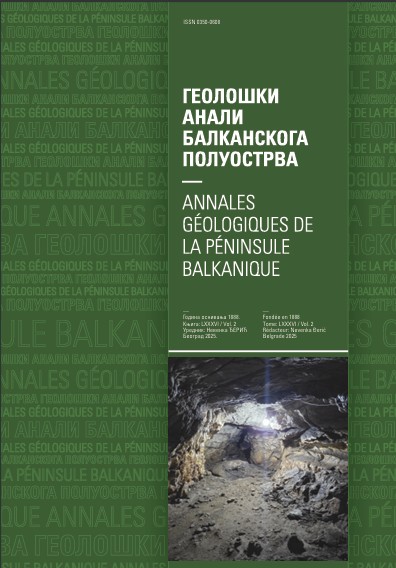Rare earth elements in some bottled waters of Serbia
Abstract
Twenty-one bottled mineral and spring waters from Serbia were analyzed for 16 inorganic chemical parameters, including lanthanides and yttrium which belong to the group of so-called rare earth elements (REE). REE concentrations in the bottled water samples varied over a broad range, from 5.39 to 1585.82 ng/L. Total concentrations in the bottled water samples were calculated taking into account the classification of lanthanides into heavy (HREE) and light (LREE), with yttrium added to the HREE group. The LREE concentrations ranged from 3.62 to 1449.63 ng/L, while those of the HREE were from 0 to 136.19 ng/L. Distinct REE signatures were observed in waters that drained specific rocks. The REE patterns in groundwater from granitic and related rocks showed LREE and HREE enrichment, while groundwater with mafic rock influence exhibited slightly LREE enrichment. Several bottled water samples featured naturally-occurring carbon dioxide, whose solutional capacity contributed to the highest REE concentrations in the analyzed samples. High REE concentrations are also a result of sudden changes in oxidation-reduction conditions, which particularly affect La, Ce and Eu. Aquifers developed in granitic and related rocks (methamorphic and sedimentary rocks) constitute favorable environments for HREE in groundwater, corroborated by the occurrence of HREE in bottled water samples. The bottled water samples largely exhibited a negative cerium anomaly and nearly all the samples showed a positive europium anomaly.
Copyright (c) 2022 Geološki anali Balkanskoga poluostrva

This work is licensed under a Creative Commons Attribution 4.0 International License.










